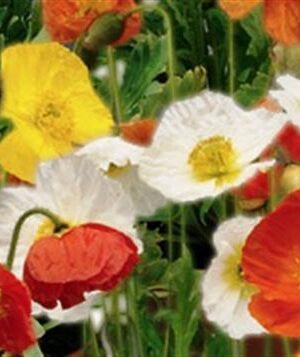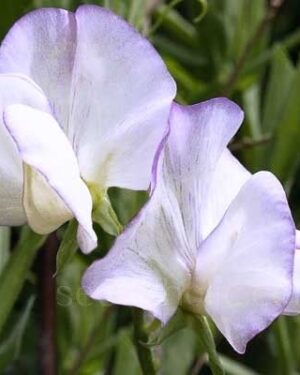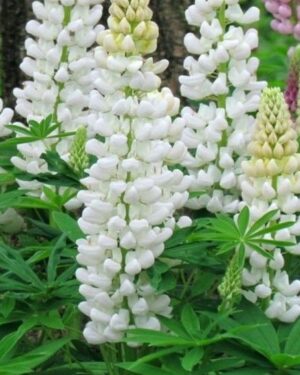Description
FLOWER COSMOS BIPINNATUS SEASHELLS organic
FLOWER COSMOS BIPINNATUS SEASHELLS organic. An Heirloom variety from the 1800’s producing an exquisite display of tubular-petalled blooms somewhat similar to a sea shell in lovely pastel colours of white, pink, rose and crimson on tall and busy plants with delightful lacy fern-like foliage. The delicate foliage and colourful flowers make an outstanding background planting that blooms all summer long. Cosmos are easy to grow and literally thrive on neglect. Half-hardy annual, 4-5′ tall.
(Soil Association Certified Organic Seed)
Cultivation Advice
- Choose a sunny location for planting Cosmos Seashells as they thrive in full sun. Ensure the area has well-draining soil.
- Work the soil to a fine texture, removing debris and rocks. Incorporate organic compost or aged manure to enrich the soil.
- Sow Cosmos Seashells seeds directly into the garden after the last frost date in your area. They prefer warm soil temperatures for germination.
- Sow the seeds about ¼ inch deep in the soil and space them 12-18 inches apart to allow for proper growth and airflow.
- Keep the soil consistently moist but not waterlogged during the germination period. Once established, Cosmos Seashells are quite drought-tolerant.
- Apply a layer of organic mulch around the plants to retain moisture, suppress weeds, and maintain soil temperature.
- Use organic fertilizers, such as compost or diluted fish emulsion, sparingly to supplement the soil’s nutrient content.
- Provide support for taller varieties by staking or using a trellis to prevent the plants from bending or breaking in the wind.
- Cosmos Seashells are generally resistant to pests and diseases. However, monitor for any signs of issues and employ organic pest control methods if needed.
- Deadhead spent flowers regularly to encourage continuous blooming. Trim back any leggy growth to maintain a compact shape.
- Cosmos Seashells attract pollinators. Encourage their presence by planting other pollinator-friendly flowers nearby.
- In warmer regions, Cosmos Seashells can be planted in the fall for winter bloom. In colder regions, they are annuals and will complete their life cycle in one growing season.
- Remove spent blooms regularly to encourage continuous flowering and prevent self-seeding if you prefer not to have the plants re-seed themselves.
- Consider planting Cosmos Seashells alongside other flowers that complement their growth habits and aesthetic appeal. Marigolds, zinnias, or coreopsis can be great companions.
- Periodically check the soil pH and amend if necessary to maintain the optimal pH level for cosmos, which typically ranges between 6.0 and 7.0.
- Use natural methods to deter pests. For example, planting aromatic herbs like basil or lavender nearby may help repel certain pests.
- Mulch not only retains moisture but also helps prevent soil compaction and erosion. Use organic mulch materials like straw or shredded leaves.
- Once established, Cosmos Seashells are fairly drought-tolerant. Water deeply but infrequently to encourage deep root growth.
- If you’d like to save seeds for the following season, allow some of the flowers to dry on the plant. Harvest the seeds once the seed heads have dried completely.
- Incorporate Cosmos Seashells into mixed borders or wildflower meadows for a diverse and visually appealing garden.
- Refrain from over-fertilizing, as Cosmos Seashells generally thrive in average soil and excessive fertilization can result in lush foliage but fewer blooms.
- Keep notes or a gardening journal to track the growth, flowering patterns, and any observations throughout the season for future reference.
- Maintain a clean garden space by removing debris, dead leaves, and spent flowers regularly. This minimizes the risk of disease and pest infestations.
- If you plan to use Cosmos Seashells as cut flowers, harvest them early in the morning when they are well-hydrated. Place the cut stems in water immediately and change the water regularly to prolong their vase life.
- Extend the blooming period by planting new batches of seeds or seedlings every few weeks. This staggered planting ensures continuous flowering throughout the season.
- Consider using organic pest control methods such as neem oil or insecticidal soap for mild infestations of aphids or other pests. Test these on a small area first to ensure they don’t harm beneficial insects.
- Cosmos Seashells attract butterflies, bees, and other pollinators. Embrace the visitors to your garden and appreciate the additional wildlife they bring.
- Pinch back or deadhead spent flowers to encourage more branching and fuller growth, resulting in more flower production.
- Handle the plants gently to avoid damaging stems or flowers, as cosmos stems can be somewhat delicate.
- Adapt your care routine based on the changing weather conditions and seasonal requirements. For instance, reduce watering during cooler, rainy periods.









Reviews
There are no reviews yet.